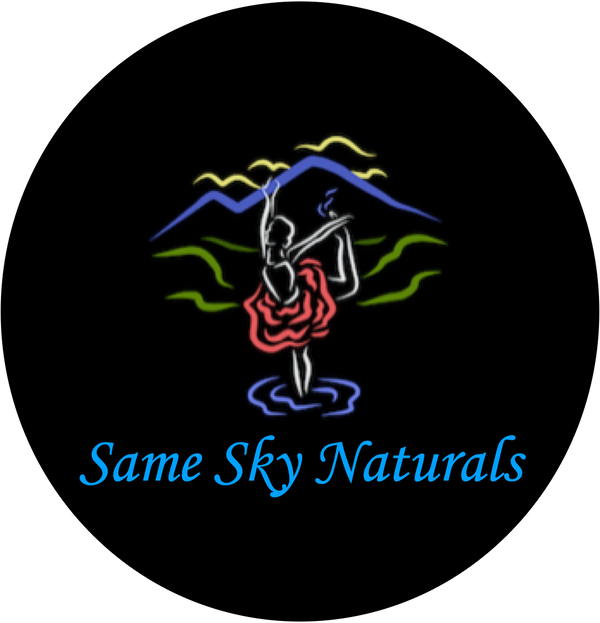Blue Butterfly Pea Flower
When our children were small and throughout elementary and middle school, one of the most popular flavors for treats (ice cream, yogurt, candy, snow cones, etc) was blue raspberry. Both our kids loved the flavor and the vivid color belonging to anything labeled “Blue Raspberry.”
I labored to teach them about good nutrition and healthy eating habits, but it was always an uphill battle. Food and treats I made at home rarely held the excitement of blue ice cream or candy, and certainly never turned their teeth blue, which is always cool if you’re 8!
I tried in vain to tell them that any kind of bright blue food did not exist in nature and the synthetic color additives were certainly not good for them. As far as I knew, a raspberry that was the color of the flavor in their favorite yogurt or sour candy didn’t exist in nature. After all, I grew up with a garden full of raspberries that my brother and I picked during the summer, and they were a dark red color, and delicious just as they were. We always ate as many as we brought in for my mom to use for dinner every day.
I still don’t believe there is a truly blue raspberry (the bright electric blue in processed foods) that one can pick off of a bush in a garden or growing wild, but after years claiming that blue food does not exist in nature, I have found out that I was wrong. I stand corrected and am in absolute awe over the blue butterfly pea flower!

Blue butterfly pea is an evergreen creeping plant that is native to equatorial Asia and grows as well in parts of South America. The flowers are a beautiful vibrant blue or purple and are used in teas, salads and to color food of all sorts. It yields a color for food that is a beautiful bright blue or purple, depending on the acidity of the food you’re adding it to.
In addition to the stunning color yielded by the flowers, they are also packed with powerful antioxidants and polyphenols that deliver a variety of benefits when ingested or applied topically. Blue butterfly pea is rich in flavonoids, a potent antioxidant that helps to reduce inflammation and redness, soothing the skin and reducing the signs of extrinsic aging.(1,3)
Blue butterfly pea contains a high concentration of naturally occurring polyphenols (proanthocyanidin) which stimulate the natural production of collagen and elastin. This helps keep skin from breaking down which ultimately leads to sagging and wrinkles. I don’t know anyone who wants those!
In addition to helping skin to naturally produce collagen and elastin, it is believed that the anthocyanins in blue butterfly pea can actually inhibit the activity of the enzymes elastase and collagenase which target and destroy collagen and elastin in our skin.
There is also evidence to support blue butterfly pea’s ability to protect the proteins in your skin from glycation (harmful sugar molecules) 2,4, that breaks down the skin’s structure leading to, you guessed it, wrinkles and sagging.
Blue butterfly pea has also been shown to improve the skin’s barrier function, helping to lock in moisture and keep out irritants that can damage or stress the skin. Truly a powerhouse in terms of keeping the skin healthy and happy, it is also one of those ingredients that is beneficial to all skin types, even extremely sensitive or acne prone skin.
Same Sky Naturals has harnessed the healing power inherent in blue butterfly pea as a key ingredient in our signature night cream, NightSilk Blue. Add to this, blue tansy and german chamomile essential oils as well as rose hip and pomegranate CO2 extracts, and a host of other healthy natural oils and extracts and you have a product designed to repair, replenish and rejuvenate the skin as you sleep.

As a bonus, this plant is fast growing, can be cultivated easily in many areas, and is really good for improving soil quality. In fact, we are hoping to be able to plant some around our place next year to help supplement this latest of my tea and skincare habits!
1. Phrueksanan W, Yibchok-anun S, Adisakwattana S. Protection of Clitoria ternatea flower petal extract against free radical-induced hemolysis and oxidative damage in canine erythrocytes. Res Vet Sci. 2014 Oct;97(2):357-63. doi: 10.1016/j.rvsc.2014.08.010. Epub 2014 Sep 3. PMID: 25241390.
2. Chayaratanasin P, Adisakwattana S, Thilavech T. Protective role of Clitoria ternatea L. flower 48500; PMCID: PMC7923514extract on methylglyoxal-induced protein glycation and oxidative damage to DNA. BMC Complement Med Ther. 2021 Mar 1;21(1):80. doi: 10.1186/s12906-021-03255-9. PMID: 336.
3. Zakaria NNA, Okello EJ, Howes MJ, Birch-Machin MA, Bowman A. In vitro protective effects of an aqueous extract of Clitoria ternatea L. flower against hydrogen peroxide-induced cytotoxicity and UV-induced mtDNA damage in human keratinocytes. Phytother Res. 2018 Jun;32(6):1064-1072. doi: 10.1002/ptr.6045. Epub 2018 Feb 21. PMID: 29464849.
4. Chayaratanasin P, Barbieri MA, Suanpairintr N, Adisakwattana S. Inhibitory effect of Clitoria ternatea flower petal extract on fructose-induced protein glycation and oxidation-dependent damages to albumin in vitro. BMC Complement Altern Med. 2015;15:27. Published 2015 Feb 18. doi:10.1186/s12906-015-0546-2

